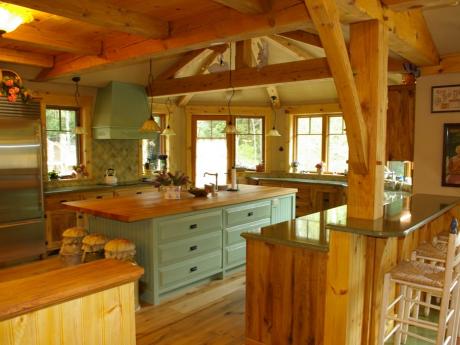Kantor Residence
Project Photo Gallery
Project Team
Ratings, Awards and Recognition
This Adirondack-style home in idyllic New Canaan, CT is a laudable example of achieving luxurious living with minimum environmental impact. The near net-zero energy custom home aimed to carry out the vision of environmental stewardship from homeowners Etta and Nate Kantor. The home received the highest accolades from the industry: LEED for Homes Platinum and the National Green Building Standard Emerald certifications through verification services provided by Steven Winter Associates, Inc. (SWA). The home was also a contender for Connecticut’s Zero Energy Home of the Year (HERS Index 14, or 86% savings over code).
To showcase the achievement in efficient planning by Edgcomb Design Group and construction services by BPC Green Builders, the Kantor residence has become home to educational workshops and tours from CT Clean Energy Fund, CT Green Building Council, and Fairfield University.
The most noteworthy green features include solar thermal panels that heat a 1,000 gallon water tank, which, not unlike a battery, store heat for the house, domestic hot water, and pool; a pellet boiler with automatic feed to supply any demand not met by the solar system; a waste-water heat recovery from the master shower; a composting toilet and greywater storage tank; and local, low-emitting, sustainably-grown and harvested interior finishes. Half of the roof’s runoff is collected in cisterns, and rain gardens control excess storm water.
During construction, 90-percent of waste was diverted from landfills. A specialized contractor was hired to design the fireplace, giving the home a pleasant aesthetic while minimizing typical energy loss. A recycled rubber and plastic roof that resembles slate shingling boasts 14 photovoltaic panels, and an additional set in the backyard provides heating for the pool. Overall, 94.2-percent of the home’s energy needs are met by solar technologies.
Quick Facts
General
| Location | New Canaan, Connecticut |
|---|---|
| Building Type | single-family residence |
| Project Type | Zero Energy Ready / Near Zero Energy |
| Basis of Performance Claim | Modeled |
| Bedrooms | 6 |
Energy Summary
| Energy Data Type | Modeled |
|---|---|
| Renewable Energy System Type(s) | Photovoltaics |
| Ratings |
LEED for Homes Platinum and the National Green Building Standard Emerald certifications through verification services provided by Steven Winter Associates, Inc. (SWA). The home was also a contender for Connecticut’s Zero Energy Home of the Year (HERS Index 14, or 86% savings over code). |
| HERS Index | 14 |
| Annual renewable energy generated | 15,768 kWh/year |
Envelope and Mechanicals
| Subslab assembly |
Basement slab has been thermally isolated from the ground below and other structural penetrations using 2” XPS insulation (R10), at the slabs perimeter using 2” high compressive strength closed cell rigid foam insulation (R10). |
|---|---|
| Foundation wall assembly |
Foundation walls are manufactured offsite by Superior walls, then installed by crane, consisting of 10-1/4” thick wall with high strength concrete studs at 24” OC, incorporating a continuous 1” XPS insulation (R5) at the exterior of the wall behind 1-3/4” of high strength concrete, leaving a 7-1/2” deep cavity for electrical wiring and additional insulation. These walls are then strapped using 2x6’s ripped in half, placed horizontally at 24” OC to increase the exterior walls thermal resistance. |
| Above grade wall assembly |
Stick framed walls consist of 2x6’s spaced at 24” OC using FSC rated lumber also strapped using 2x6’s ripped in half, placed horizontally at 24” OC to increase the exterior walls thermal resistance. |




